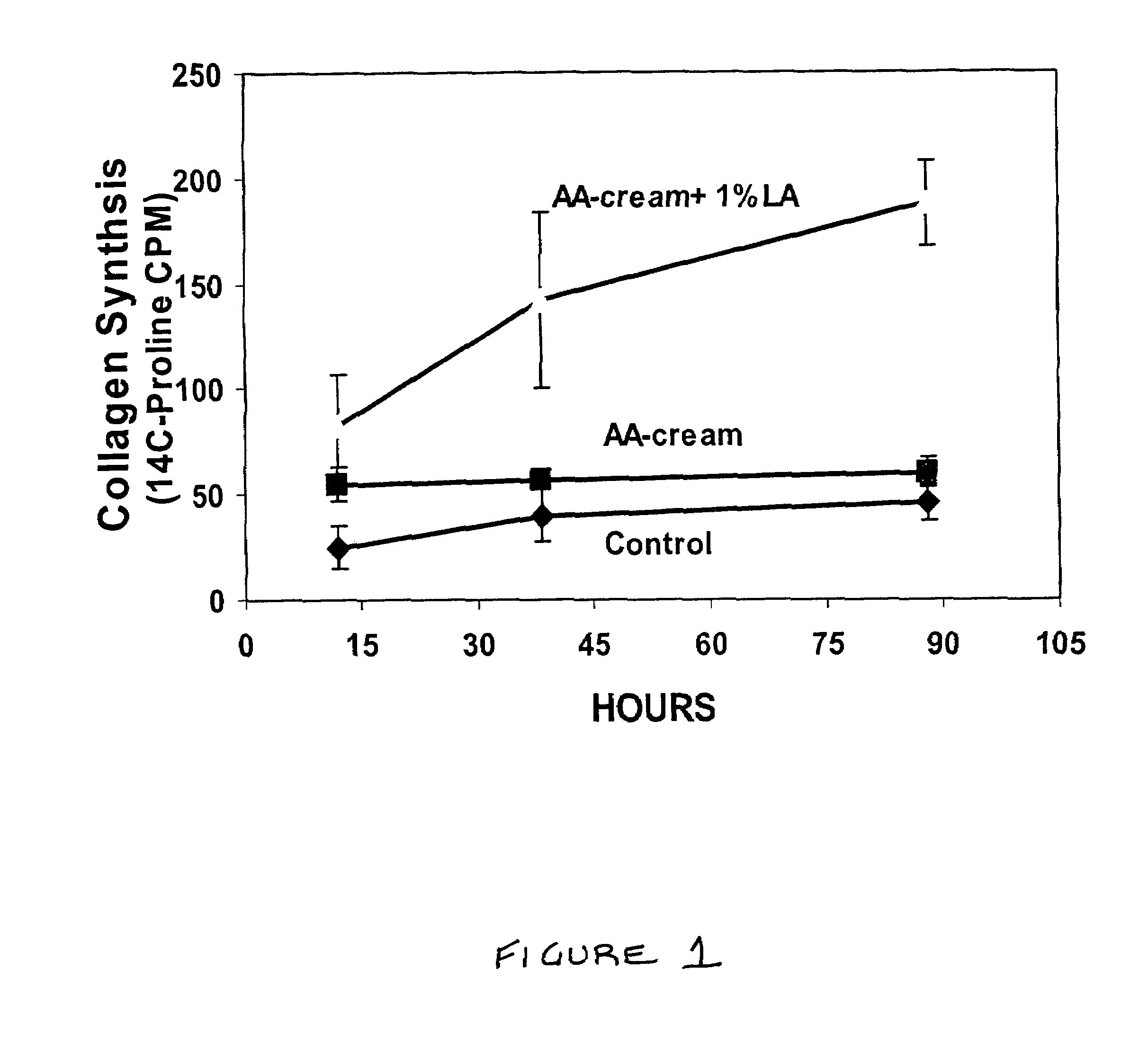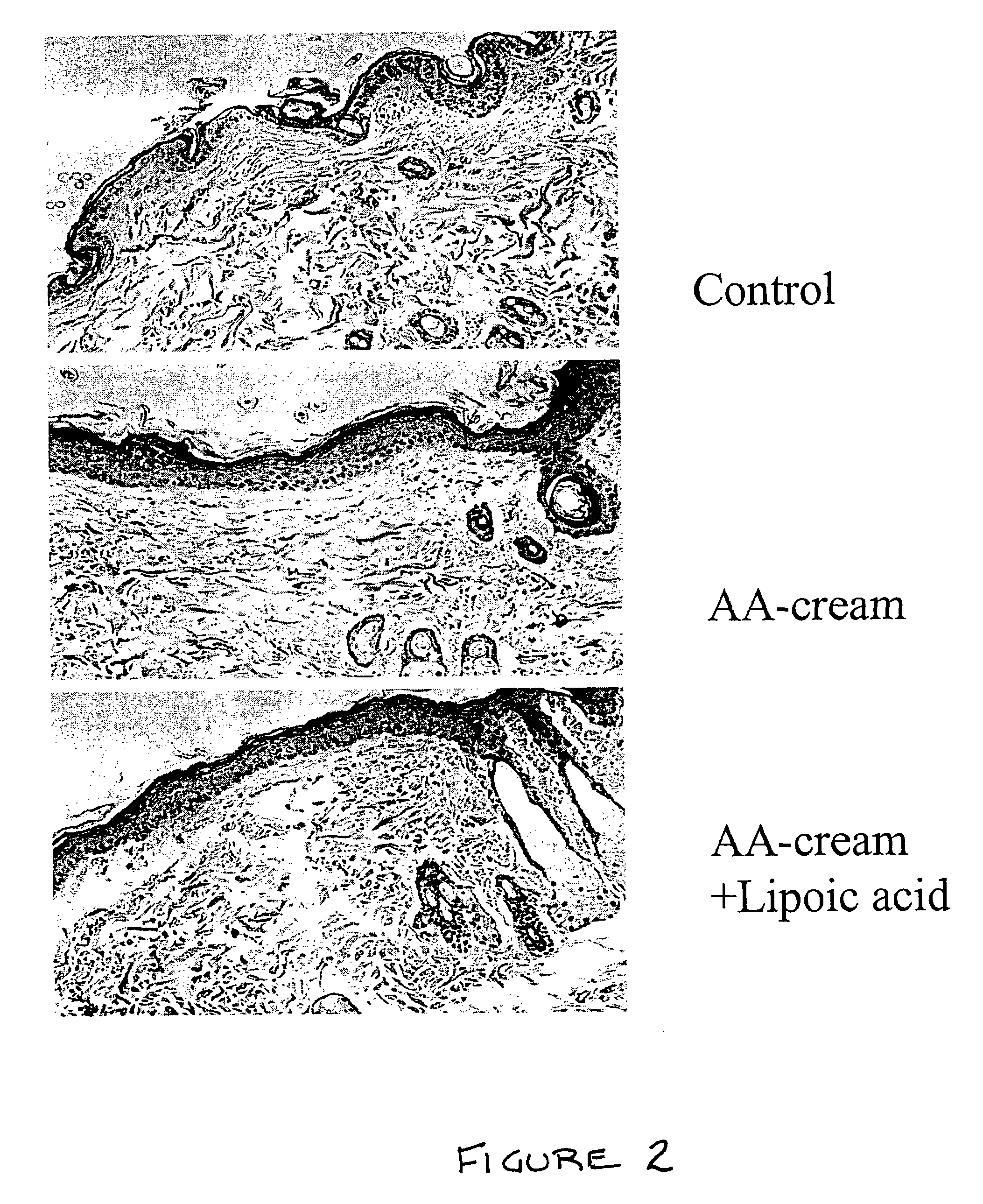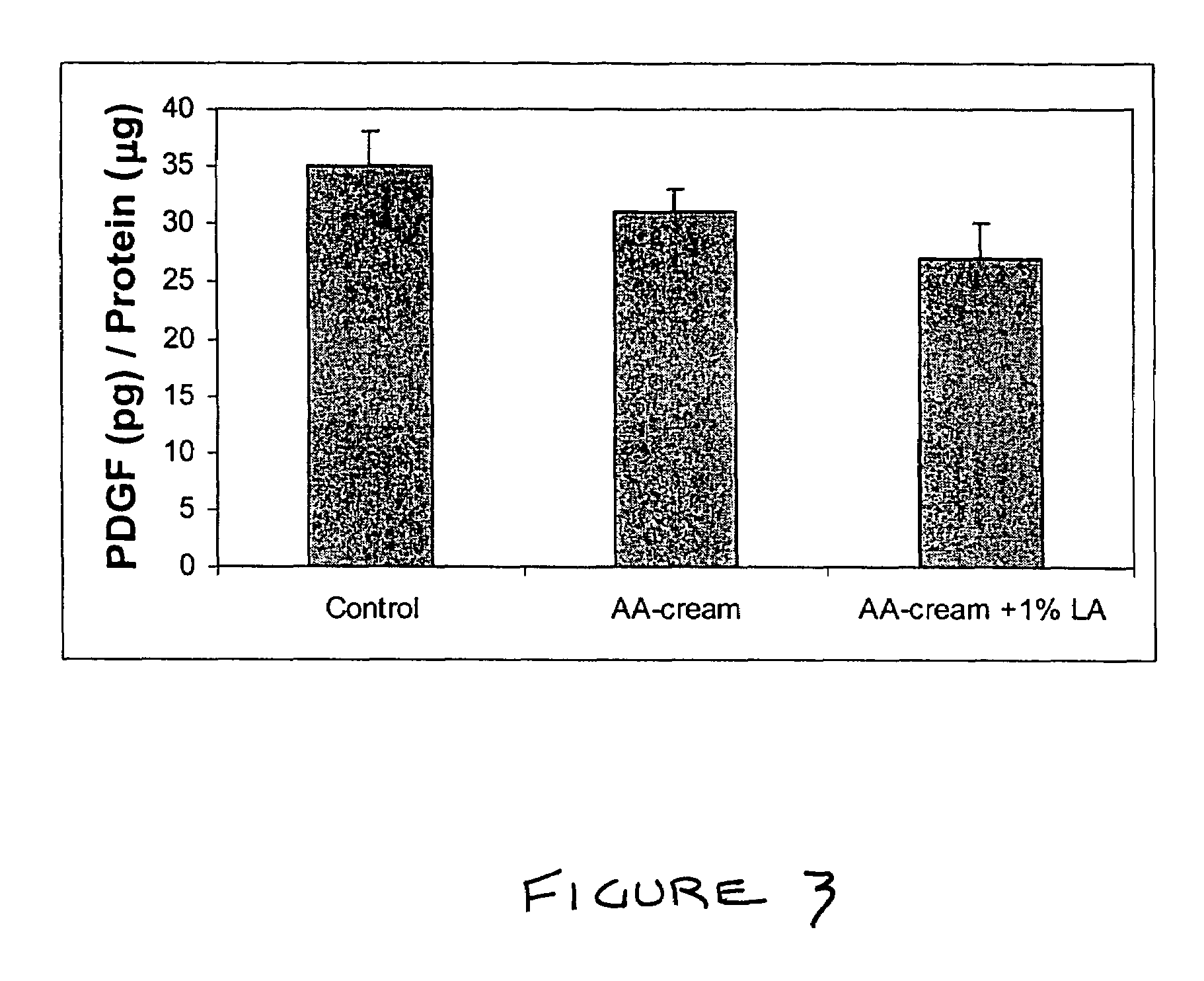Methods and compositions for enhancing collagen and proteoglycan synthesis in the skin
a technology of collagen and proteoglycan, applied in the direction of biocide, plant/algae/fungi/lichens, peptide/protein ingredients, etc., can solve the problems of a large number of nutrients, and a large number of hydrolyzed collagen, etc., with little documented success, and large proteins such as collagen cannot traverse the dermal barrier. , the effect of small molecules
- Summary
- Abstract
- Description
- Claims
- Application Information
AI Technical Summary
Benefits of technology
Problems solved by technology
Method used
Image
Examples
example 1
Effect of Lipoic Acid and Proanthocyanidin on Collagen Synthesis in Rat Dermis
Materials and Methods
Dermal Application to Rats
[0175]Nine adult rats (female retired breeders) were obtained from Hylan (Hylan Co. CA) with average weight 250 g. To the shaved dorsum a basic cream formulations containing the various additives were applied twice daily for 10 days. Additives included 3% benzyl alcohol, which served as a penetration enhancer, and a mixture of essential amino acids. The amino acid mixture was compounded to match the ratios of these amino acids as they are present in human serum. The lipoic acid concentration was 1.0%. The cream was rubbed in gently until it appeared to vanish from the surface. At the end of this period, rats were sacrificed and skin removed for biochemical and histological analysis.
TGF-β and PDGF Assay
[0176]Skin from the area where cream was applied was removed and cleaned of hair and attached fat and placed over a bed of ice. One cm2 of skin was homogenized i...
example 2
Effect of Lipoic Acid on Human Skin In Vivo
[0187]The composition used in Example 1 was applied to the skin surface of a number of human volunteers. The effect of the composition on the skin was determined by a modification of the microrelief technique. This technique relies essentially on the application of a polyvinylsiloxane impression material, similar to what dentists use to take impressions in the mouth, to the skin. Upon drying the film is removed and either sputter coated with a conducting metal for visualization using a scanning electron microscope, or more easily with a high power stereomicroscope, and photographed. The technique is simple and reproducible. Each division on the scale equals 0.5 mm.
[0188]The pattern observed in the skin changes with age, as evidenced by the obvious differences between the pattern seen for a 3-year-old-girl (FIG. 7) and for her 35-year-old mother (FIG. 8). These patterns were obtained without treatment.
[0189]FIGS. 9 and 10 show the effect of ...
PUM
| Property | Measurement | Unit |
|---|---|---|
| weight | aaaaa | aaaaa |
| thick | aaaaa | aaaaa |
| pH | aaaaa | aaaaa |
Abstract
Description
Claims
Application Information
 Login to View More
Login to View More - R&D
- Intellectual Property
- Life Sciences
- Materials
- Tech Scout
- Unparalleled Data Quality
- Higher Quality Content
- 60% Fewer Hallucinations
Browse by: Latest US Patents, China's latest patents, Technical Efficacy Thesaurus, Application Domain, Technology Topic, Popular Technical Reports.
© 2025 PatSnap. All rights reserved.Legal|Privacy policy|Modern Slavery Act Transparency Statement|Sitemap|About US| Contact US: help@patsnap.com



